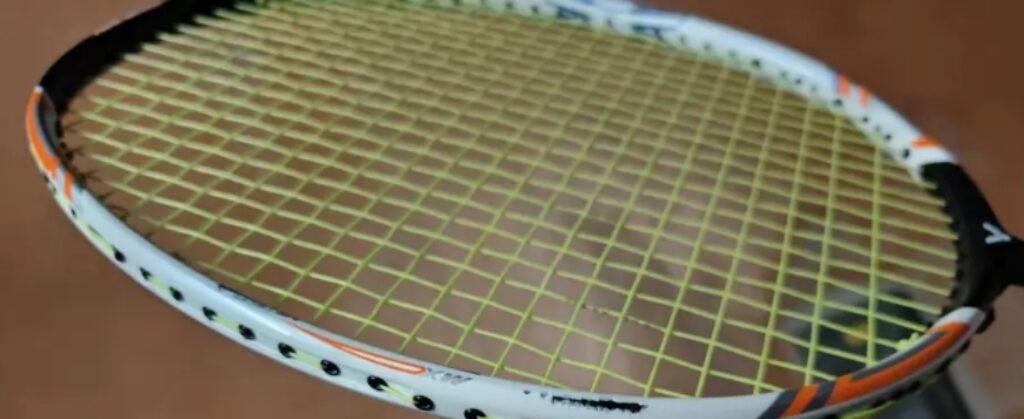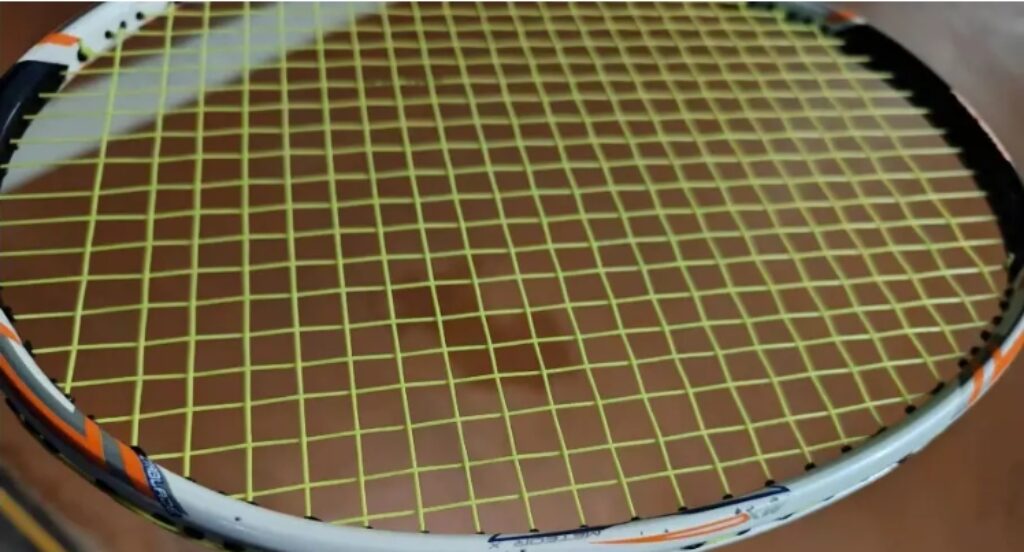Specifications:
Weight: 3U G5, with grip, total weight in use: 91.38g, balance point: 312mm, shaft length: 215mm, stiffness: high.
Frame: octagonal aerodynamic frame, 80-hole string bed, grooves at 9-3 points.
String tension: 28 lbs recommended, strung at 26 lbs with BG80.
The paint quality of the MX series isn’t particularly good; even the MX80 often suffers from chipping, let alone the mid-range and low-end models. The 360 and 260 only differ in color schemes; the three-way joint and T-joint have been changed to a contrasting black, and the magenta at 2, 10, 5, and 7 o’clock has been replaced with orange. The racket now looks more vibrant, with a neutral appearance and striking colors. I don’t dislike this restrained visual style; there’s nothing overly eye-catching about the racket, but it’s pleasant to look at.

This is a thoroughly offensive racket. After removing the grip, the strong head-heavy feel, noticeable self-weight, and high overall stiffness clearly indicate this. It’s quite different from the more gentle 260 in the same range. The 360 provides a powerful feeling of leveraging, allowing you to use a high arc to send the shuttlecock to the opponent’s baseline with just a casual swing of the handle. You need to control the speed and force to avoid sending the shuttlecock out of bounds. The 80-hole string bed is familiar; it’s easy to find the sweet spot despite the higher tension.
While most users might already be familiar with the racket’s feel, its high swing weight and stiffness still demand significant physical ability from the user, comparable to top offensive rackets.

The racket has a raw power feel, with high shuttlecock speed and good penetration. It works well for suppressing opponents’ baseline shots in singles or targeting the opponent’s female partner in mixed doubles. The high lift and smash actions are consistent, making it harder for opponents to predict the shuttlecock’s trajectory after several rallies. Additionally, the MX360’s string bed offers high tolerance, ensuring reliable performance in rear court lifts, using the racket’s head weight to achieve good shuttlecock release. Combined with the octagonal aerodynamic frame’s torsional resistance and directionality, it exhibits high stability in control.
The benefits of nano-resin are finally evident, with the shaft’s elasticity approaching that of high-end rackets. This, combined with the racket’s strong downward pressure, creates explosive offensive power. When fully utilizing the rear court, the MX360 delivers a substantial smashing force with a low trajectory and fierce intensity, without significant power loss, putting substantial pressure on opponents.

However, the racket’s continuity is quite poor. The high swing weight and long stroke time can be advantageous in rear court doubles, but once the rhythm is set, it becomes ineffective. Flat drives are particularly laborious, and in the mid-front court, if entangled by the opponent, it only remains to “block.” An assertive high lift is a good escape strategy, including in continuous defensive smashes. Even with this strategy, the high power demands during emergencies make the MX360’s performance in passive situations feel somewhat inadequate.
When unable to reach high points at the net, softer blocks and returns become more effective for net play. Fortunately, the 360 has a solid and steady feel, which doesn’t hinder these actions.
Positioned as a mid-range racket, the MX360 reminds me of the Colombia series, with similar pricing. Although MX360 is still far from the quality of the Colombia 6, which remains the king in this category, it’s not easy for a mid-range racket to stand out. Despite its straightforward approach, the MX360 has left a strong impression.

Leave a Reply